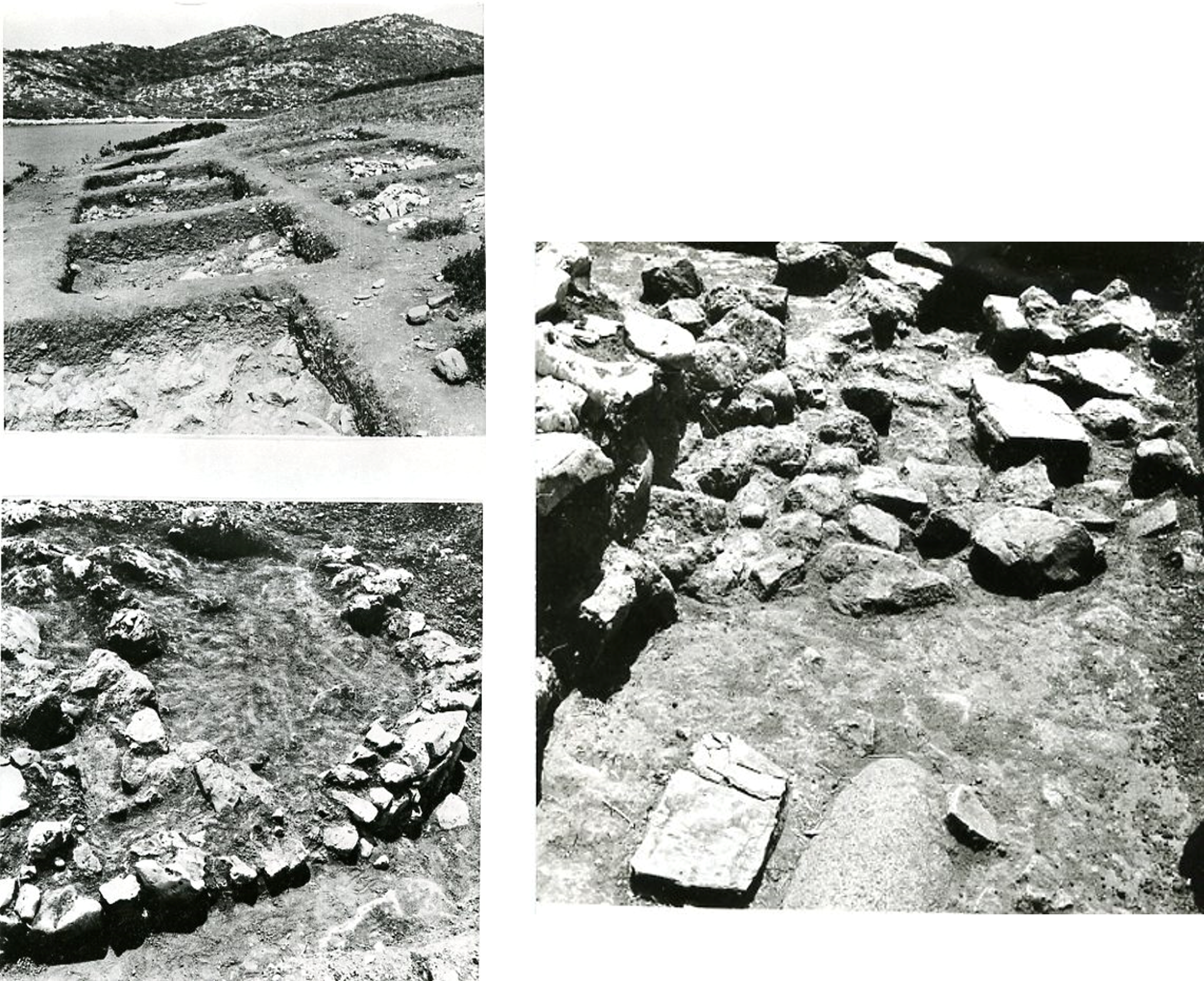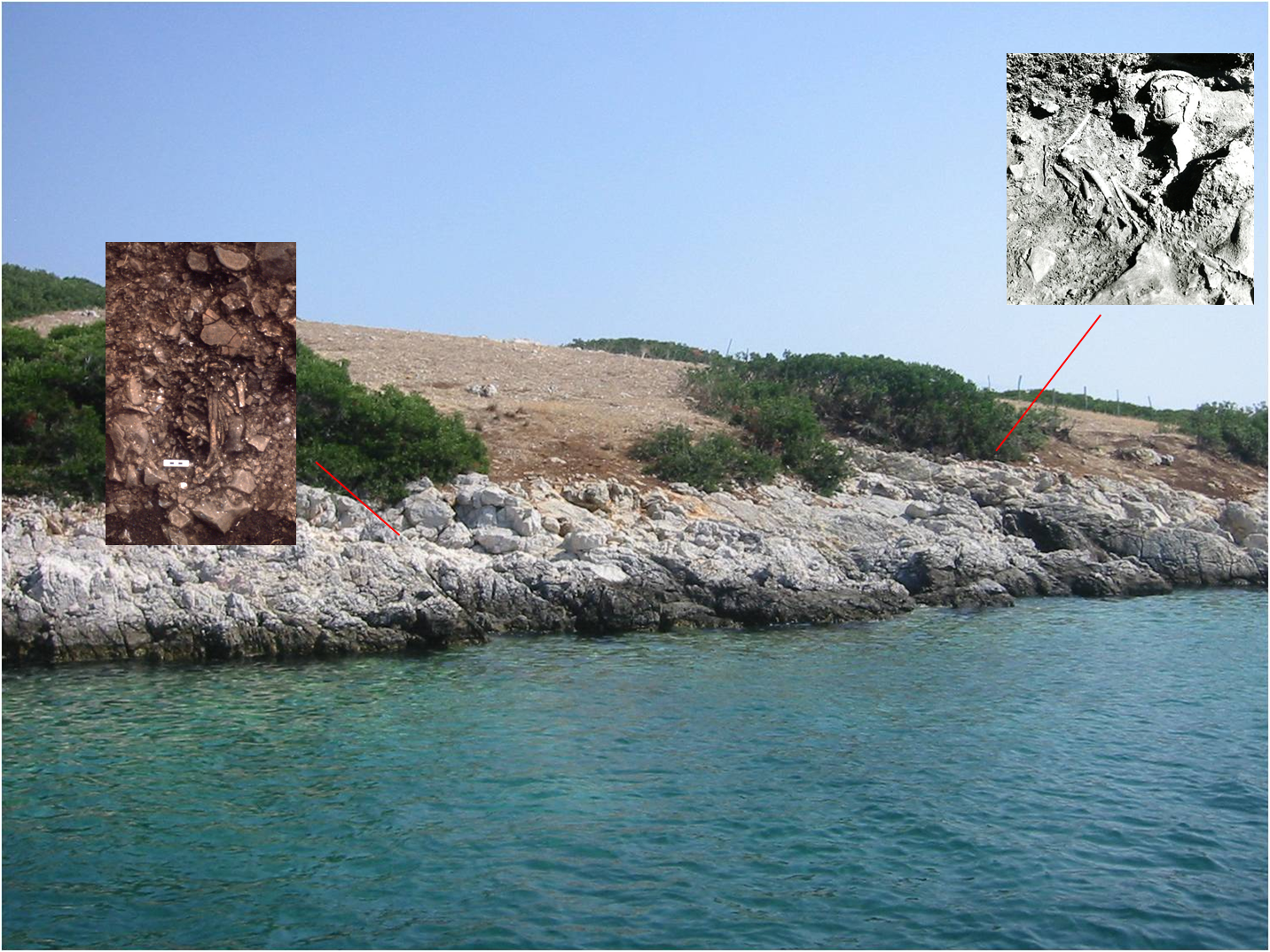
Once part of Kyra Panagia, an uninhabited islet north of Alonissos, the island of Agios Petros “christened” not only the bay it dominates, but an entire culture.
What are the features of the “Culture of St. Peter” created by a few dozen families when they permanently settled in the area around the end of the 7th millennium (6100 BC) and for about 1000 years? How did the “inhabitants” of the now almost sunken place live and what is their uniqueness?
“The fact that the maritime settlement of Agios Petros has survived to this day at the bottom of the Aegean Sea, several thousand years after its foundation by the first agricultural groups that arrived in Greece, is a special case of an archaeological site, since it allows us to touch and archaeologically investigate a number of important issues concerning the history of habitation on the islands in the Aegean, the natural environment that the first islanders saw,” says Nikos Efstratiou, professor of prehistoric archeology at AUTH, head of land and sea research at the site where the oldest known sunken settlement in the Aegean arose.
Findings in the light

During the excavations on the islet, architectural elements were found (for example, stone rectangular and arched buildings, two children’s burials in natural rock cavities, stone piles, walls, etc.), movable finds such as flint tools, obsidian and animal bones, food remains from various animals, birds, fish and oysters, as well as anthropomorphic figurines and pottery shards with inscriptions that also give the designation “St. Peter’s Culture”.
“Perhaps the most interesting archaeological evidence available to us (pottery, figurines, obsidian) is that it was not an isolated community, but, on the contrary, had cultural contacts with other and often more distant geographical areas, such as the southern Aegean , Thessaly, Balkans and Anatolia. Moreover, archaeological research today recognizes that the arrival of agricultural groups from Anatolia to Greece, to other Aegean islands such as Crete, and then their movement to the Balkans and Europe also took place by sea. And Agios Petros is a unique example of the early colonization of the Aegean islands at the end of the 7th millennium BC. From archaeological finds, we know that the “tenants” of Agios Petros were farmers, cattle breeders, as well as fishermen and hunters. This is evidenced by the remains of animals, birds and fish found in archaeological layers, both on land and in the sea,” adds Nikos Efstratiou.
Research History
The prehistoric settlement of Agios Petros was first discovered in the 60s by the archaeologist Dimitris Theoharis, then Commissioner of Antiquities of Thessaly. Since the 1980s, research has been led by Nikos Efstratiou, who conducted the first underwater explorations in the area, in collaboration with renowned oceanographer N.C. Flemming and a team of archaeological divers from the University of Cambridge. Today, research conducted by AUTH and the Ephorate of Marine Antiquities is part of a promising five-year program.
“What distinguishes Agios Petros in terms of archeology is the underwater exploration, which began in 2021 in the context of an ambitious five-year program (2021-2025) – a collaboration between AUTH and the YPPOA Ephorate of Marine Antiquities, which aims to archaeologically study the submerged part of the position from cutting-edge scientific research, such as coring in the sea embankments of the settlement to search for human DNA in cooperation with research centers abroad,” says Nikos Efstratiou.
Research goals for 2023

The professor also refers to the research goals for 2023. “Research for 2023 is focused on completing the acceptance of cores aimed at identifying ancient human DNA and opening test sites in the place where surviving architectural remains have already been identified since 2021 (stone plans, etc.). We are also looking for clues that will shed light on early shipping practices in the Aegean, such as the type of boats used by the first islanders, which we can only speculate on since there are similar findings at the international level,” he emphasizes.
At the time the settlement was built, the islet of Agios Petros was connected to Kyra Panagia through a peninsula that is now flooded, as is part of the Neolithic settlement.
“The process of gradual flooding of the settlement of Agios Petros in the bay of the same name is a completely natural process associated with a continuous rise in sea level and is usually not due to any dramatic geological phenomena. But what we are mainly interested in is the rate of its rise and, moreover, what was the reaction of the inhabitants of the settlement to the eustatic and climatic changes that took place over the years of the existence of the settlement. Everything shows that the usually gradual, but often rapid rise of the sea encouraged them to move to the higher parts of the range. This is what led to the flooding of the lower parts of the settlement of Agios Petros, as a result of which today most of the settlement is 5-7 m below sea level,” Nikos Efstratiou told APE-MPE.
Attractive archeology
“Imagine that with the help of archeology we can talk about the daily life of these first agricultural communities, their way of life, their occupations, as well as aspects of their behavior, their relations and contacts with other neighboring insular or continental groups. Everything that archaeological research attempts to approach with the help of every possible modest material remains preserved in the soil, on land or in the sea. The idea that archeology is the only science that can open a window into the distant past and acquaint us with a way of life that has been irretrievably lost is indeed attractive and complex. It’s not that it’s easy, without difficulties, especially when we try to talk about behavior and personal or collective choice with the help of results,” concludes Nikos Efstratiou.
Source: RES-IPE
Source: Kathimerini
Ashley Bailey is a talented author and journalist known for her writing on trending topics. Currently working at 247 news reel, she brings readers fresh perspectives on current issues. With her well-researched and thought-provoking articles, she captures the zeitgeist and stays ahead of the latest trends. Ashley’s writing is a must-read for anyone interested in staying up-to-date with the latest developments.